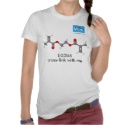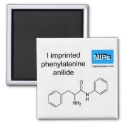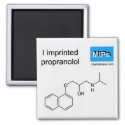|
|
Reference type: Journal
Authors: Yavuz H, Andaç M, Uzun L, Say R, Denizli A
Article Title: Molecular recognition based iron removal from human plasma with imprinted membranes.
Publication date: 2006
Journal: International Journal of Artificial Organs
Volume: 29
Issue: (9)
Page numbers: 900-911.
Alternative URL: http://www.artificial-organs.com/index.asp?a=abstract&id=785C307B-29A8-4B9E-8DE8-66F281C
Abstract: The aim of this study is to prepare ion-imprinted poly(2-hydroxyethyl methacrylate) ( HEMA) based membranes which can be used for the selective removal of Fe3+ ions from Fe(3+)overdosed human plasma. N-methacryloyl-(L)-glutamic acid (MAGA) was chosen as the ion-complexing monomer. In the first step, Fe3+ was complexed with MAGA and then, the Fe3+-imprinted poly(HEMA-MAGA) membranes were prepared by UV-initiated photo-polymerization of HEMA and MAGA-Fe3+ complex in the presence of an initiator (benzoyl peroxide). After that, the template (i.e., Fe3+ ions) was removed by using 0.1 M EDTA solution at room temperature. The specific surface area of the Fe3+-imprinted poly(HEMA-MAGA) membranes was found to be 49.2 m(2)/g and the swelling ratio was 92%. According to the elemental analysis results, the polymeric membranes contained 145.7 mu mol MAGA/g polymer. The maximum adsorption capacity was 164.2 μmol Fe3+/g membrane. The relative selectivity coefficients of ion-imprinted membranes for Fe3+/Zn2+ and Fe3+/Cr3+ were 12.6 and 62.5 times greater than the non-imprinted matrix, respectively. The Fe3+-imprinted poly( HEMA- MAGA) membranes could be used many times without decreasing their Fe3+ adsorption capacities significantly
Template and target information: iron, ferric ion, Fe(III)
|


 cross-link with me ball and stick shirt
cross-link with me ball and stick shirt







 I imprinted phenylalanine anilide magnet
I imprinted phenylalanine anilide magnet







 I imprinted propranolol magnet
I imprinted propranolol magnet






